 | ||
my perfect pinto horse indiana i miss you
A pinto horse has a coat color that consists of large patches of white and any other color. The distinction between "pinto" and "solid" can be tenuous, as so-called "solid" horses frequently have areas of white hair. Various cultures throughout history appear to have selectively bred for pinto patterns.
Contents
- my perfect pinto horse indiana i miss you
- Origins
- Color patterns and genetics of pinto horses
- Colors
- Patterns
- Related terms
- Paint vs pinto
- Organizations
- Breed registries and white markings
- Lethal white syndrome
- References

Many breeds of horse carry pinto patterns. Pinto coloring, known simply as "coloured" in nations using British English, is most popular in the United States. While pinto colored horses are not a "breed," several competing color breed registries have formed to encourage the breeding of pinto-colored horses. The word "paint" is sometimes used to describe pinto horses, but today is specifically used for the American Paint Horse, which is a pinto-colored horse with identifiable American Quarter Horse or Thoroughbred bloodlines.
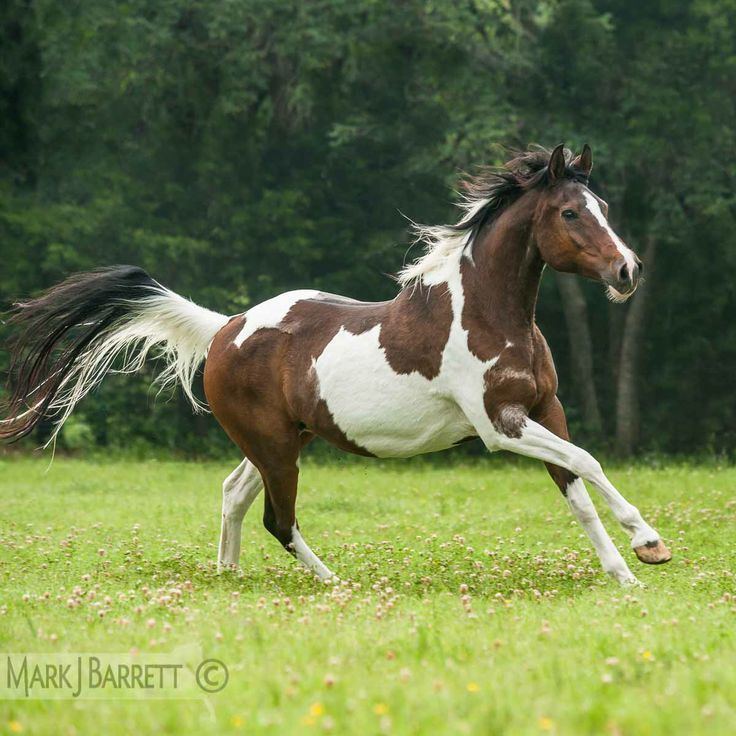
Pinto patterns are visually and genetically distinct from the leopard complex spotting patterns characteristic of horse breeds such as the Appaloosa. Breeders who select for color are often careful not to cross the two patterns, and registries that include spotting color preferences often will refuse registration to horses who exhibit characteristics of the "wrong" pattern.
Origins
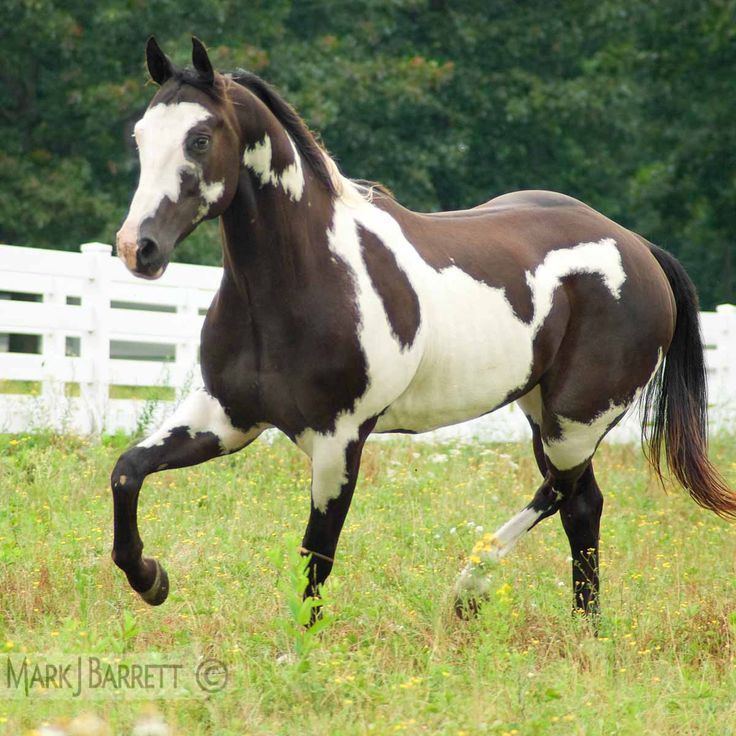
Although pinto coloration is rare in the wild, people have always had an eye for animals of unusual colors and a desire to deliberately breed for them. Images from pottery and other art of ancient antiquity show horses with flashy spotted patterns. Images of spotted horses appear in the art of Ancient Egypt, and archaeologists have found evidence of horses with spotted coat patterns on the Russian steppes before the rise of the Roman Empire. Later, spotted horses were among those brought to the Americas by the Conquistadors.
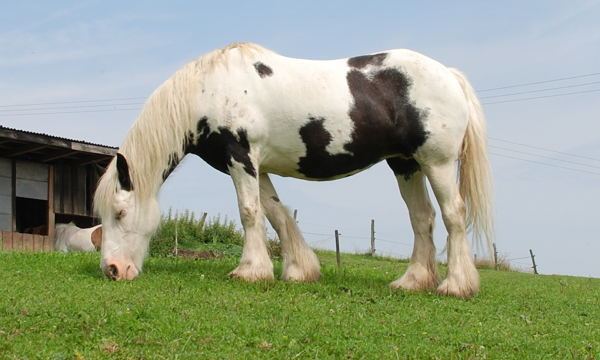
By the 17th century in Europe, spotted horses were quite fashionable, though when the fad ended, large numbers of newly-unsellable horses were shipped to the Americas, some for sale, and others simply turned loose to run wild. The color became popular, particularly among Native Americans, and was specifically bred for in the United States, which now has the greatest number of pinto horses in the world.
The word "pinto" is a Spanish word literally meaning 'painted' and also 'dappled' or 'spotted'.
Color patterns and genetics of pinto horses
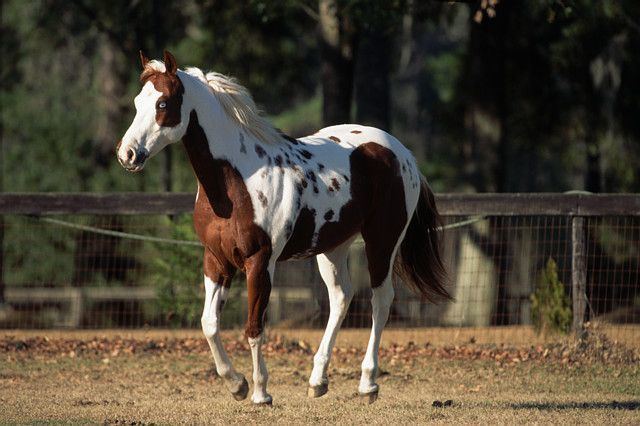
There are a number of words which describe the various color and spotting patterns of pinto horses. Essentially, a pinto horse is genetically created when an allele for a spotting pattern is present. The genes that create the underlying base coat color are not related to the genes that create white spotting. The precise mechanisms that create spotting are not all fully understood, but those that are known often have human parallels, such as piebaldism. What horse terminology describes as "pinto" or "coloured" has been called leucism or "partial albinism" by pigment researchers. Common terms for describing different types of pinto horses include:
Colors
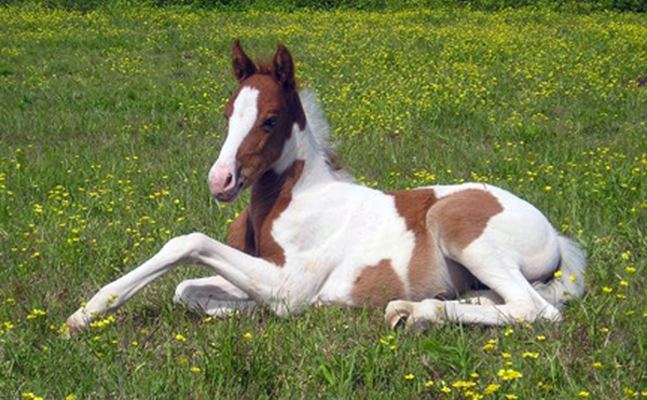
Patterns
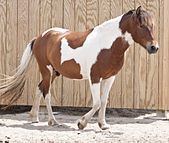
Related terms
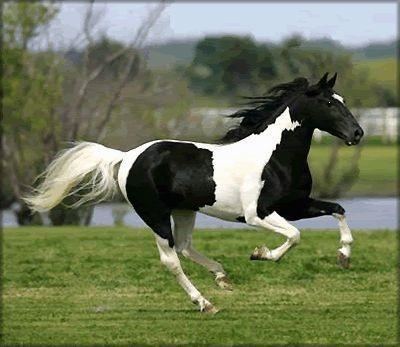
"Paint" vs. "pinto"
A pinto differs from a "Paint" solely by breeding. Horses with pinto coloring and verifiable pedigrees tracing to Quarter Horses or Thoroughbreds have been named the American Paint Horse, and are recorded in a separate registry, the American Paint Horse Association. While a pinto may be of any breed or combination of breeds, and some registries for pintos may have additional restrictions (some do not register draft horses or mules, for example), a horse that is registered as an American Paint Horse must have at least one parent recorded with the APHA and both parents must be only of registered American Quarter Horse, American Paint Horse, or Thoroughbred bloodlines. Therefore, most Paint horses may also be registered as pintos, but not all pintos are qualified to be registered as Paints.
Thus, while it is always correct to refer to a horse with a non-leopard spot pattern as a pinto, a spotted horse should only be called a Paint if its ancestry is known or if it displays conformation that is clearly akin to that of an American Quarter Horse. A leopard spotted horse is usually called an Appaloosa, whether it is a registered Appaloosa or not. However, "paint" or "painted" was also an archaic word used by 19th century writers for assorted spotted horses bred by various Plains Indian tribes and thus is occasionally used in this context when describing all types of spotted Mustangs.
Organizations
There are a number of color breed registries that encourage the breeding of pinto-colored horses, with varying registration requirements. On one hand, the Pinto Horse Association of America (PtHA) considers pinto horses recorded in their registry as a true breed and accepts solid-colored offspring of registered pinto parents as breeding stock, though with strict requirements for full registration. The less restrictive organizations allow registration of a horse of any breed or combination of breeds with as little as three square inches of white above the knees or hocks, not including facial markings. Some pinto registries do not accept animals with draft horse or mule breeding, though others do. None accept horses with the genetically distinct Appaloosa pattern, produced by genes in the leopard complex, and the Appaloosa registry in turn does not accept animals with pinto patterns.
Breed registries and white markings
Many breed registries do not, or at some time in the past did not, accept "cropout" horses with spots or "excess" white for registration, believing such animals were likely to be crossbreds, or due to a fear of producing lethal white foals. This exclusion of offspring from pedigreed parents led to the formation not only of the American Paint Horse Association, but also other pinto registries as well. Among the breeds that excluded such horses were the Arabian horse and American Quarter Horse registries. However, modern DNA testing has revealed that some breeds do possess genes for spotting patterns, such as a non-SB-1 sabino pattern in Arabians, and sabino, overo, and tobiano in Quarter Horses. Therefore, these registries have modified their rules, allowing horses with extra white, if parentage is verified through DNA testing, to be registered. On the other hand, the Jockey Club's Thoroughbred registry still does not officially recognize pinto as a registerable color, though they do allow white body spots to be recorded under the category of markings. The Welsh Pony and Cob Society of the UK also does not accept "piebald" or "skewbald" horses for registration.
Lethal white syndrome
As noted in the description of patterns, above, the frame gene is associated with a condition called lethal white syndrome or "lethal white overo". However, of the overo family of patterns, only frame is associated with lethal white. Also, some horses that do not visually appear to be frame patterned still do carry the gene. However, if a foal is born homozygous for the gene, it dies shortly after birth. This gene can be detected by DNA testing, and breeders can now avoid breeding two carrier horses to one another.
